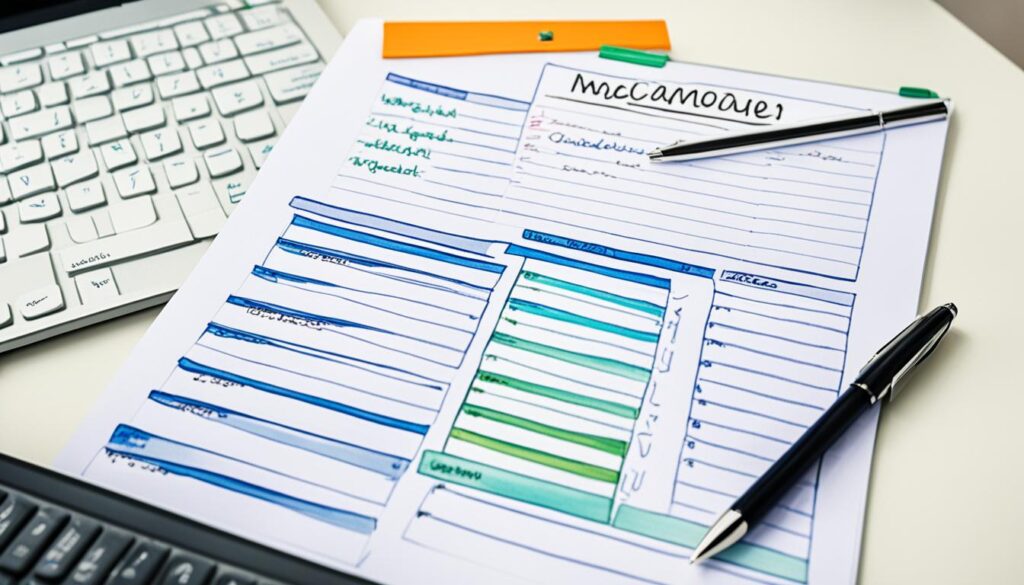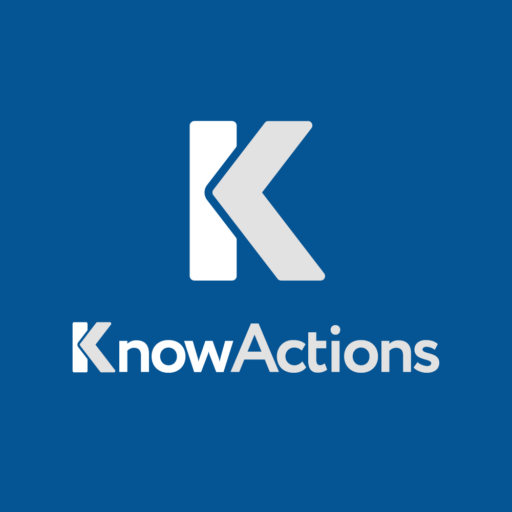As teams expand, the complexity of tracking action items grows, potentially affecting productivity1. This fact highlights the essential role of effective meeting action tracking in today’s fast-paced business world. By implementing the right strategies, organizations can enhance their efficiency and ensure that crucial decisions lead to concrete outcomes.
Meeting action tracking goes beyond mere record-keeping; it’s about fostering accountability and advancement. When action items are meticulously documented, tracked, and managed, teams see a rise in efficiency and productivity1. Moreover, clear meeting minutes act as an official record of decisions and actions, proving invaluable for future reference, evaluation, and clarification2.
Effective task management through meeting action tracking involves assigning specific individuals to action items, setting realistic due dates, and maintaining a centralized hub for all meeting-related tasks1. This method not only keeps teams organized but also ensures that progress is tracked and workload is distributed evenly. By adopting robust action item tracking systems, businesses can cultivate a culture of responsibility and ensure consistent follow-through on meeting commitments.
Key Takeaways
- Meeting action tracking becomes more crucial as teams grow
- Well-managed action items lead to increased team efficiency
- Clear assignment of tasks and deadlines enhances accountability
- Centralized tracking systems improve task management
- Proper documentation aids in future reference and decision justification
- Timely distribution of meeting minutes maximizes retention
Understanding the Importance of Meeting Action Tracking
Meeting action tracking is essential for managing teams and boosting productivity. It ensures a clear record of discussions, decisions, and tasks. This approach helps teams stay aligned and improves efficiency and accountability.
Creating a Record for Reference
Meeting Minutes are crucial for all attendees. They capture key points, decisions, and tasks, preventing important details from slipping away. Action items clarify tasks, focus, and direction, ensuring everyone knows their roles and deadlines3. This clarity reduces confusion and ensures tasks are clear, promoting a more productive setting.
Ensuring Task Completion
Tracking action items is key to completing tasks. Assigning tasks to individuals adds responsibility and minimizes social loafing3. Clear due dates and detailed descriptions enhance efficiency and clarity4. Follow-up Reminders are vital for keeping tasks on track and spotting issues early.
Keeping Absent Members Informed
Action tracking keeps absent team members updated on discussions and decisions. This approach ensures all members, regardless of attendance, stay informed and can contribute to projects. Timely updates on action items promote a culture of openness and proactive problem-solving, enhancing team communication3.
| Benefits of Action Item Tracking | Impact on Team Productivity |
|---|---|
| Clarity and Direction | Eliminates guesswork, specifies tasks |
| Increased Accountability | Reduces social loafing, enhances responsibility |
| Enhanced Productivity | Breaks down projects, creates momentum |
| Better Time Management | Helps prioritize workload efficiently |
| Improved Communication | Fosters openness, proactive problem-solving |
Using action item tracking, teams can align fully on next steps, ensuring shared goals and expectations4. This method not only boosts productivity but also offers chances for growth and continuous improvement.
Best Practices for Effective Meeting Management
Effective meeting management is key to achieving goals efficiently and promoting teamwork. A successful meeting must have a clear purpose, active participation, and clear outcomes5. To make meetings productive, follow these best practices:
- Prepare a well-organized agenda
- Assign roles and responsibilities
- Encourage active participation
- Use visual aids
- Summarize key points and actions
Start with the most critical topics in your agenda, then discuss complex and less urgent matters5. This keeps the meeting focused and ensures vital issues are covered. Using Collaboration Tools can improve Project Workflow and make meetings more efficient.
Assigning roles like facilitator, timekeeper, and note-taker helps manage the meeting effectively6. Encourage everyone to share their ideas to create a more engaging environment5.
Visual aids, such as concise slide decks and graphics, enhance understanding and engagement5. After the meeting, summarize key points and actions to keep everyone aligned. Short breaks between meetings can also increase productivity and creativity.
| Meeting Type | Purpose | Key Components |
|---|---|---|
| Informational | Share updates | Clear presentation, Q&A session |
| Brainstorming | Generate ideas | Open discussion, creative techniques |
| Decision-making | Reach consensus | Prepared options, voting process |
| Progress update | Track Project Workflow | Status reports, issue resolution |
| Training | Skill development | Interactive exercises, feedback |
By adopting these best practices and using the right Collaboration Tools, you can greatly enhance your meeting management skills. This leads to better outcomes for your team and organization6.
Creating Clear and Actionable Meeting Minutes
Effective meeting minutes are essential for tracking actions and improving meeting efficiency. They act as a guide for future decisions, ensuring everyone is aligned. This makes them a vital tool for team coordination.
Designating a Note-Taker
Choosing a dedicated note-taker is crucial for capturing vital information. This role requires strong listening and organizational skills to accurately record key points. A skilled note-taker enhances the quality of minutes and boosts meeting efficiency7.
Using Templates for Consistency
Standardized templates improve the consistency and readability of meeting minutes. A well-designed template should include sections for meeting details, attendees, agenda topics, decisions, and action items. This format makes it easier to reference and log action items8.
Focusing on Key Discussion Points and Decisions
Meeting minutes should focus on key discussions and decisions, not minor details. This ensures they remain concise and actionable. Documenting decisions and action items is key for project success and accountability9.
To enhance meeting efficiency, distribute minutes within 24 hours of the meeting. This quick turnaround allows for timely clarifications and keeps all team members, including absentees, informed of crucial outcomes and tasks87.
Meeting Action Tracking: Tools and Techniques
Effective meeting action tracking is key to project success. Modern tools and techniques significantly boost this process, making it efficient and reliable.
Digital Collaboration Platforms
Digital collaboration platforms have transformed action item tracking. Project managers leverage these platforms for task collaboration, offering various views like Gantt charts, task lists, and kanban boards to track progress10. These tools streamline project workflow and enhance task management efficiency.
AI-Powered Meeting Assistants
AI-powered meeting assistants are redefining how we manage meeting outcomes. These tools automate transcription, extract key points, and create documents. This technology boosts collaboration tools by providing accurate, instant records of discussions and decisions.
Project Management Software Integration
Integrating project management software with action item tracking elevates productivity. These systems enable teams to assign tasks, set priorities, and monitor deadlines effectively. Utilizing an action item template ensures consistent formatting, reducing confusion and improving results10.
| Action Item Component | Description | Importance |
|---|---|---|
| Task Description | Clear, concise explanation of the task | Essential for understanding |
| Assignee | Person responsible for the task | Ensures accountability |
| Due Date | Deadline for task completion | Crucial for timely execution |
| Priority Level | Importance of the task | Helps in task prioritization |
Incorporating these components makes action item tracking more structured and effective. This approach simplifies project management in four distinct ways, boosting overall team productivity11.
Adopting these tools and techniques can revolutionize meeting action tracking, leading to better project outcomes and team performance.
Assigning Responsibility and Setting Deadlines
Effective task management relies on clear responsibility allocation and realistic deadline setting. Assigning specific individuals to tasks, rather than departments, boosts accountability and team productivity. Smart project management tools can automate this process, ensuring real-time follow-ups during meetings12.
When crafting action items, clarity is paramount. Each task must clearly define the responsible person, the action needed, and the deadline. This method ensures tasks are not overlooked or left incomplete12. Setting SMART goals and prioritizing tasks by urgency and importance are crucial for managing deadlines effectively13.
Consider these strategies for optimal task management and deadline setting:
- Use planning tools to track projects and tasks
- Host regular meetings to align on goals and deadlines
- Add buffer time to deadlines to prevent feeling overwhelmed
- Implement dedicated focus time to boost productivity
Effective communication among team members can significantly reduce production time14. By leveraging visual project management tools, you can better manage project complexities and enhance team productivity13.
“Establishing clear action items after meetings helps organize projects efficiently, forming the backbone of successful task management.”
Lastly, encourage team accountability. Each member should grasp their role in meeting deadlines. Regular progress reviews and dynamic priority adjustments are essential for managing concurrent project deadlines successfully13. With these practices, your team’s productivity and task management efficiency will significantly improve.
Implementing a Follow-Up System
A robust follow-up system is essential for effective Action Item Tracking. Regular check-ins and Follow-up Reminders can significantly boost productivity and reduce customer churn15.
Regular Check-Ins on Action Items
Consistent review of action items is crucial for tracking progress and identifying challenges. A daily 10-minute retro meeting can help prioritize tasks and keep everyone aligned16. This practice ensures important tasks don’t fall through the cracks and allows timely adjustments to strategies.
Using Reminders and Notifications
Technology is key for Follow-up Reminders in today’s fast-paced work environment. Text messages, with their 98% open rate, are an effective tool for time-sensitive follow-ups15. A system that sends automatic reminders helps team members stay on top of their responsibilities without constant manual oversight.
![]()
Escalation Procedures for Overdue Tasks
Clear escalation procedures for overdue tasks are vital for maintaining accountability. The RACI matrix can be an effective tool for keeping internal teams accountable and ensuring responsibilities are clearly defined16. When tasks are overdue, a predetermined escalation process helps address issues promptly and keeps projects on track.
| Follow-up Method | Effectiveness | Best Use Case |
|---|---|---|
| Text Messages | 98% open rate | Urgent reminders |
| Daily Retro Meeting | High | Task prioritization |
| RACI Matrix | Medium to High | Team accountability |
By implementing these strategies, teams can foster a culture of accountability. This ensures action items are consistently tracked and completed. This systematic approach to Follow-up Reminders and Action Item Tracking not only improves internal processes but also enhances customer satisfaction. 90% of customers expect quick responses to their queries15.
Enhancing Team Accountability Through Transparent Tracking
Transparent tracking of action items is crucial for boosting team productivity. Seeing each other’s progress creates a positive pressure to perform. This dynamic is similar to exercising in a gym, where the presence of others motivates individuals to enhance the quality and timeliness of their tasks17.
Logging action items in a shared space enhances mutual respect for deadlines and deepens commitment to tasks17. This transparency accelerates project completion and goal attainment18. Teams that value open communication thrive in happier, more productive environments17.
Transparent tracking allows team members to seek help without embarrassment, preventing confusion and mistakes17. It also fosters innovation by encouraging the sharing of diverse perspectives17. Such open dialogue often uncovers breakthrough ideas that might remain hidden in less transparent settings1718.
| Benefits of Transparent Action Item Tracking | Impact on Team |
|---|---|
| Enhanced Productivity | Faster project completion |
| Improved Quality | Reduced errors and rework |
| Increased Innovation | More creative solutions |
| Stronger Team Culture | Better collaboration and trust |
Efficient time tracking tools aid in documenting project activities and maintaining accountability17. This approach not only boosts performance but also cultivates a culture of constructive feedback. It fosters collaboration and strengthens team bonds18.
Leveraging Technology for Efficient Action Item Management
Modern technology has revolutionized how we manage meeting action items. Teams can enhance productivity and streamline their workflow by utilizing cloud-based storage, automated task assignment, and real-time collaboration tools.
Cloud-Based Storage Solutions
Cloud storage platforms offer seamless access to meeting minutes and action items. Teams can effortlessly store, share, and update documents in real-time. This ensures everyone has the latest information, promoting transparency and efficient progress tracking19.
Automated Task Assignment and Tracking
Automation tools can automatically assign tasks to team members and track their progress. This not only saves time but also minimizes the chance of missing crucial action items. AI-powered meeting assistants can further enhance efficiency by generating agendas and summarizing key points20.
Real-Time Collaboration Features
Collaboration tools enable team members to update task status and communicate instantly. This fosters accountability and keeps everyone informed about project progress. With these tools, teams can cut down on unnecessary meetings and focus more on productive tasks21.
By embracing these technological advancements, organizations can significantly enhance their action item management. This leads to more effective meetings, improved team collaboration, and ultimately, better project outcomes19.
Overcoming Common Challenges in Meeting Action Tracking
Effective meeting management encounters numerous obstacles that can impede task management and overall meeting efficiency. A staggering 63% of meetings lack proper follow-up, while 55% of sales representatives feel meetings consume valuable selling time22. These statistics underscore the imperative for enhanced action tracking strategies.
One significant challenge is information overload. To counteract this, focus on capturing key points and decisions rather than every detail. Clear action items with specific owners and deadlines are essential for successful task management. Distributing meeting minutes promptly, ideally within 24 hours, helps maintain momentum and ensures all participants are aligned.

Inconsistent formatting can complicate readability and comprehension. Adopting a standardized template for meeting minutes facilitates easy scanning and enhances meeting efficiency. Regular review and approval of minutes maintain accuracy and create a dependable record for future reference.
Technical difficulties and late starts can disrupt meetings, impacting productivity. To mitigate these issues, provide clear meeting guidelines and tips for effective organization. Shortening meetings to under an hour can help maintain focus and productivity23.
Lastly, lack of employee participation and ignored meeting agendas are prevalent pitfalls. Boost engagement by sending agendas in advance and fostering a healthy work environment that encourages active contribution. By tackling these challenges directly, teams can significantly boost their meeting efficiency and task management processes.
Measuring the Impact of Improved Action Item Follow-Through
Tracking meeting actions is essential for boosting team productivity and meeting efficiency. Action items, ranging from simple to complex, are tasks assigned to team members for project completion24. By focusing on the impact of better action item follow-through, organizations can enhance their performance and streamline operations.
Key Performance Indicators for Meeting Effectiveness
Teams should concentrate on specific metrics to measure meeting effectiveness. These metrics include task completion rates, meeting time efficiency, and project milestone achievement. Data-driven organizations are 19 times more likely to be profitable, underscoring the significance of efficient decision-making25. By monitoring these KPIs, teams can pinpoint areas for improvement and refine their meeting processes.
Analyzing Productivity Gains
Adopting data-driven meeting cultures can reduce average meeting duration by 20% and decrease attendance rates by 15%, thus cutting costs associated with meetings25. This leads to substantial productivity gains. Written action items ensure team members are accountable for their tasks, while tracking progress facilitates effective project management24. By examining these factors, teams can quantify the advantages of enhanced action item follow-through.
Gathering Team Feedback on Process Improvements
Regular feedback from team members is crucial for refining the action tracking process. Detailed action items serve as a reference for future projects, aiding in learning from past experiences24. By soliciting input on current practices, teams can continually improve their meeting and action item management strategies. This leads to increased team productivity and meeting efficiency.


